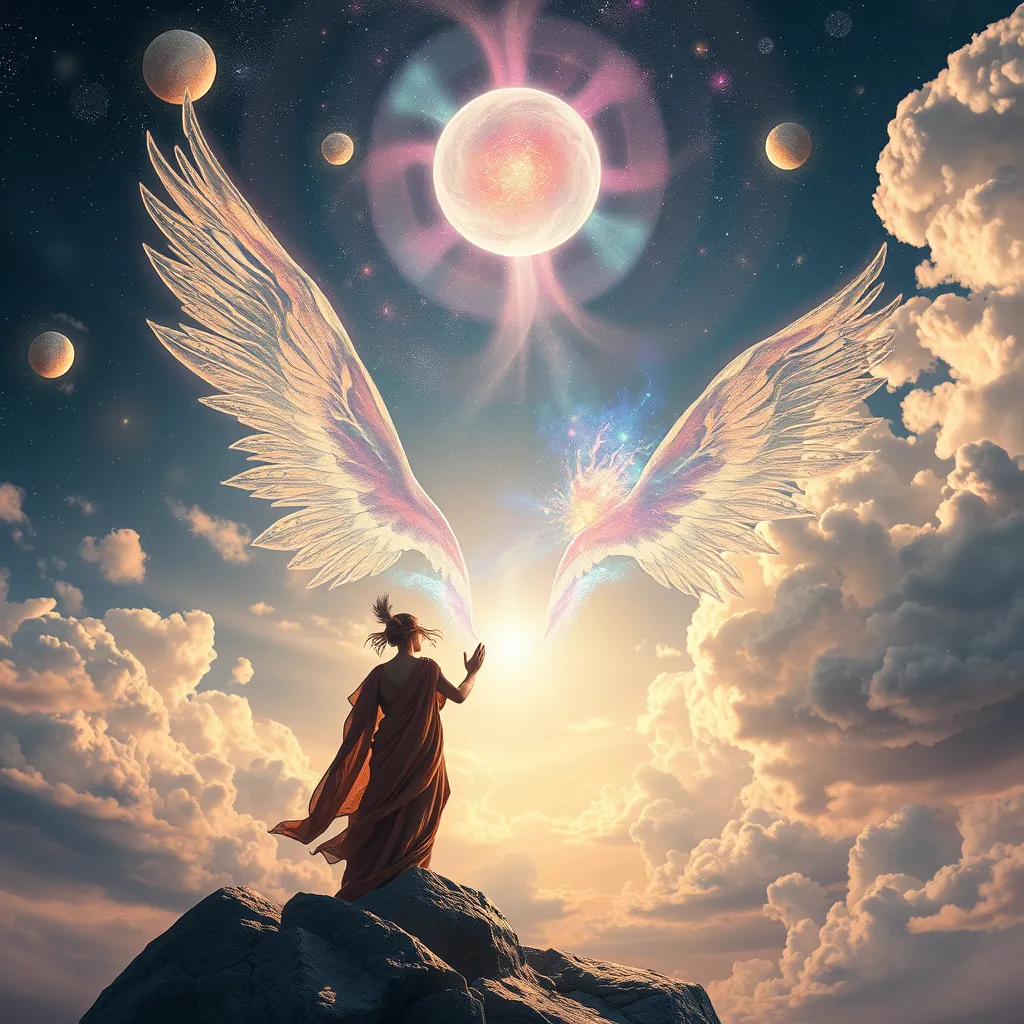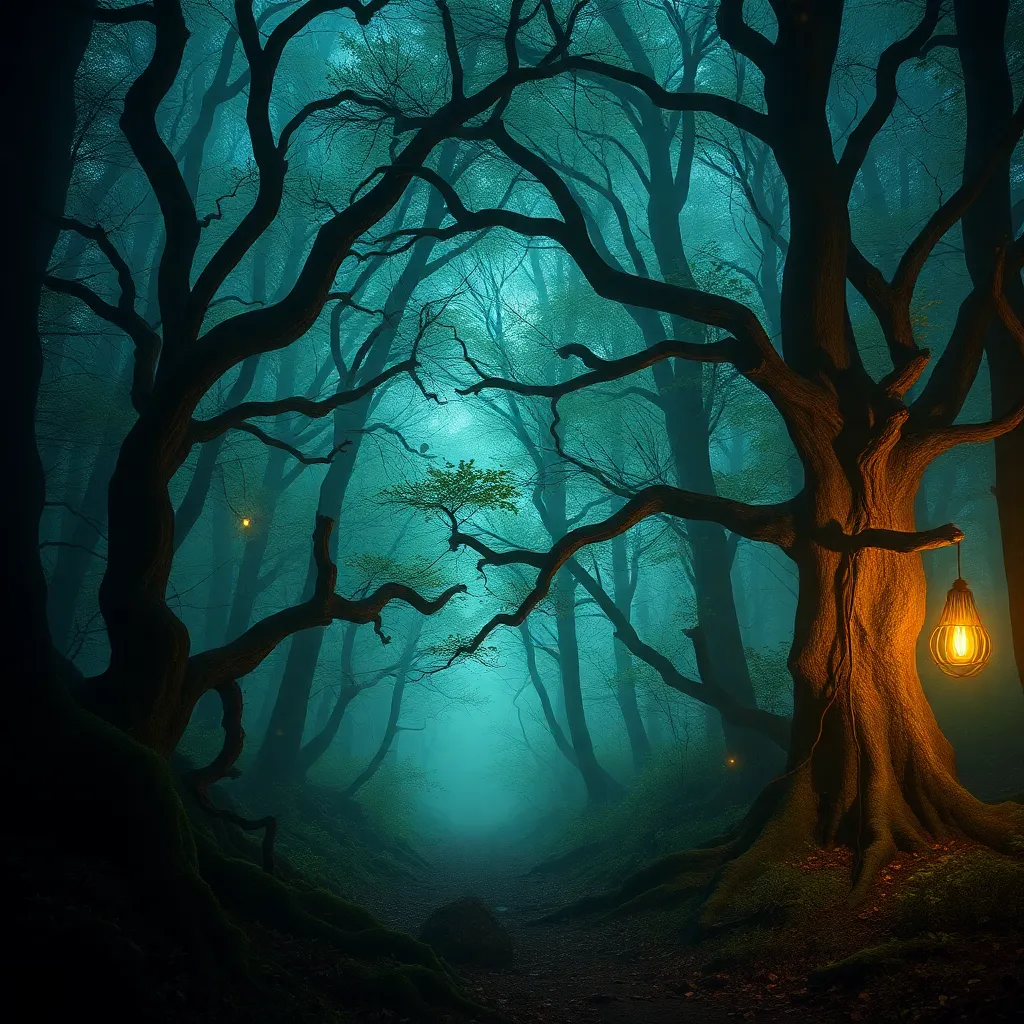The Nymphs of the Sky: Exploring the Lore of the Aura and the Iris
I. Introduction to Sky Nymphs
Nymphs are often depicted in mythology as divine spirits associated with nature, often inhabiting rivers, mountains, and trees. In the context of the sky, they embody ethereal qualities that connect the natural world with the celestial. This article delves into two significant manifestations of these sky nymphs: the aura and the iris.
The aura, often described as a subtle energy field surrounding living beings, and the iris, associated with the beauty of the rainbow, have been revered across various cultures. Both elements symbolize hope, beauty, and the divine connection between humankind and the cosmos. Through this exploration, we aim to uncover the rich lore and symbolism surrounding these celestial beings.
II. The Aura: A Celestial Presence
The concept of the aura has deep historical roots, appearing in many mythologies as a manifestation of spiritual energy. Ancient cultures believed that the aura represented the life force or spirit of an individual, often visible to those with heightened perception.
Different civilizations interpreted auras in unique ways:
- Hinduism: The aura is often linked to the chakra system, where each chakra corresponds to different colors and energies.
- Chinese Philosophy: Auras are associated with the concept of Qi, the life energy that flows through all living things.
- Western Occult Traditions: Auras were seen as reflections of one’s emotional and spiritual state, visible to those with psychic abilities.
In spiritual and metaphysical beliefs, auras play a crucial role. They are thought to convey information about an individual’s emotional health, spiritual development, and even physical well-being. Practitioners often claim that by interpreting the colors and patterns of an aura, one can gain insights into a person’s character and experiences.
III. The Iris: Guardian of the Rainbow
The iris, both a flower and a mythological figure, holds significant importance in various traditions. In Greek mythology, Iris is the goddess who serves as the messenger of the gods and is often depicted as a beautiful figure who travels along the rainbow.
In this context, Iris symbolizes communication, hope, and the connection between heaven and earth. The rainbow, a bridge between the divine and the earthly realm, represents the promise of new beginnings and the beauty that can emerge after storms.
The symbolism of the iris flower extends beyond mythology; it is often associated with:
- Beauty: The iris flower is renowned for its striking colors and intricate shapes.
- Hope: In various cultures, the iris symbolizes hope and faith, making it a popular choice in floral arrangements for significant life events.
- Wisdom: The flower is also linked to wisdom and courage, often representing the strength to move forward in life.
IV. The Intersection of Aura and Iris
The aura and the iris are interconnected in mythology, often representing similar themes of beauty, hope, and divine connection. Both serve as reminders of the ethereal aspects of existence, showcasing the interplay between the spiritual and the material worlds.
Symbolically, both concepts share:
- Colors: Auras are often described in colors that correspond to emotions and spiritual states, while the iris flower is celebrated for its vibrant hues.
- Divine Communication: The aura communicates one’s inner state, much like Iris, who conveys messages from the gods.
Artistic representations often blend the aura and iris, depicting scenes where the vibrant colors of auras flow into or surround the delicate petals of iris flowers. This fusion creates a visual language that speaks to the harmony of nature and the cosmos.
V. The Influence of the Aura and Iris in Art and Literature
Throughout history, artists have sought to depict the ethereal qualities of auras and irises in their works. Classical art often features these elements in religious and mythological contexts, showcasing the divine nature of both concepts.
Literary references to auras and irises abound in poetry and prose, where authors evoke the beauty of the natural world and the interconnectedness of life. Notable mentions include:
- Writers like William Blake, who used imagery of light and color to express spiritual ideas.
- Contemporary poets who explore themes of hope and renewal through the symbolism of the iris.
Modern adaptations in contemporary media continue to explore these themes, with films and novels portraying characters whose auras reflect their emotional journeys, often intertwined with the symbolism of irises as beacons of hope.
VI. Scientific Perspectives on Auras and Colors
In the realm of science, the concept of auras is often met with skepticism. However, contemporary understanding of auras suggests they may relate to the electromagnetic field around living beings. Some researchers propose that the colors of auras may correlate with psychological states and emotional well-being.
The psychology of color further explores how colors influence perception and emotions. Different colors evoke various responses, which can be linked to the meanings historically associated with auras and the iris:
- Red: Passion, energy
- Blue: Calm, tranquility
- Yellow: Joy, optimism
In anatomy, the iris is critical in human vision, controlling the amount of light entering the eye. The unique patterns and colors of the iris also play a role in individual identity, much like the aura represents personal energy and spirit.
VII. Cultural Practices and Beliefs Surrounding the Aura and Iris
Across cultures, rituals and traditions honor the aura and the iris, reflecting their importance in spiritual practices. Some common practices include:
- Meditation: Individuals often focus on their auras during meditation to promote healing and self-awareness.
- Flower Offerings: The iris is used in ceremonies to symbolize hope and beauty.
Healing practices related to auras include energy work, where practitioners seek to cleanse and balance the aura to promote overall well-being. In recent years, there has been a revival of interest in these concepts within spiritual communities, leading to workshops and discussions about the significance of auras and irises.
VIII. Conclusion: The Enduring Legacy of the Nymphs of the Sky
In summary, the aura and the iris represent profound themes of beauty, hope, and divine connection in mythology and culture. Their interwoven narratives reflect humanity’s ongoing quest for understanding and connection to the cosmos.
As we explore the relevance of these sky nymphs in today’s society, it becomes clear that their symbolism resonates deeply with our collective experiences. Readers are invited to reflect on their interpretations of auras and irises, considering how these celestial beings manifest in their own lives.



